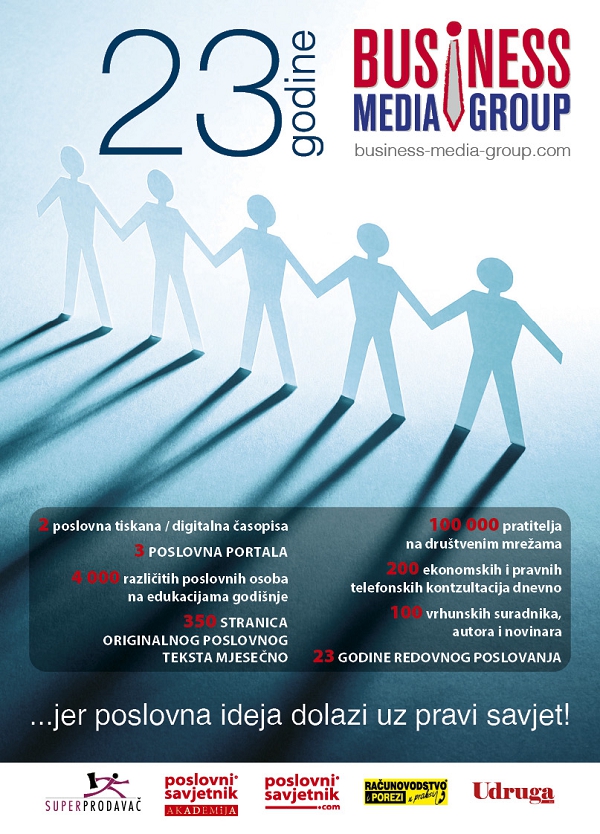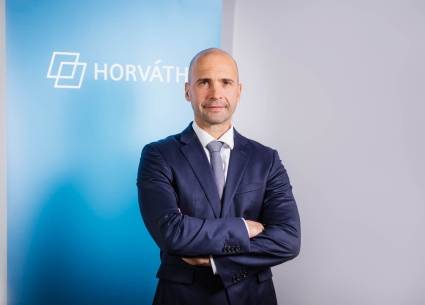John Lodder: In disruptive times the CEO is the catalyst to lead and prepare for the unknown
To thrive in a volatile and unpredictable post pandemic economy, companies need smarter, faster, more agile business operations. That requires big changes, especially involvement, unity and commitment from the very top of the organization.
Being a CEO or a leader has probably never been as difficult as in these days, but, at the same time your strong leadership has never been more necessary. With on top a war that will hit our economies extra hard.
In this column I focus on the external and internal disruptions that are happening and effecting most organizations, and I present the top 7 leadership skills that are required for success in any role, in any profession, in any industry.
Times of crisis almost always reveal or reinforce a company’s “true colors”, it can be a time of lasting set-back or exceptional co-elevation and unified achievement. (Prof. Dr. David Cooperrider)
Nobody can predict the future!
The turbulent times we are living in, with disruptions and change as the only constant, makes it difficult for CEO’s and leaders to decide on a clear strategy.
Once you, for instance, finish your SOAR or SWOT analysis, several assumptions already have changed again.
1 - Companies face several external challenges
-Meeting today’s customer demand is difficult, many sectors still lack a clear picture of what their customers will want tomorrow.
-The impact of rising geopolitical tensions, actual especially in Europe and Russia.
-Growing pressure from customers, regulators, and investors to tackle environmental sustainability, social justice and climate change.
-137 countries have pledged to achieve net-zero carbon emissions by the middle of this century and many major economies are now backing up these high-level commitments with specific legislation.
-23 countries have announced bans on the sale of fossil-fuel-powered cars over the next three decades, with Norway imposing this rule starting in 2025.
-New rules are also forcing companies to take responsibility for the impact of their wider value chains.
-For example in Germany, the Supply-Chain-Care Obligations Act will require organizations to ensure that their direct and indirect suppliers meet a broad range of environmental and social standards in 2023.
-Similar regulations are in the pipeline or already in place in many other major economies.
-The labor challenge is becoming more acute. The ‘Great Resignation’ and the pandemic accelerated the automation and digitization ambitions of many organizations with obvious effects on their current and future skill needs.
-To keep labor supply and demand in balance, research by the McKinsey Global Institute suggests that, across the world’s eight largest economies, more than 100 million people (one in every 16 workers) will need to transition to new roles by 2030. In advanced economies, that figure represents a 25% increase compared to pre-pandemic predictions.
These trends raise essential ‘operational related’ tough questions:
-Into which degree does this affect my organization?
-Can we meet customer demands, both today and tomorrow?
-Should we boost capacity to prepare for a prolonged period of rapid growth or reduce it, or preparing for a slowdown and the threat of stagflation?
-Where will we get the skilled, digitally savvy workforce we will need in the coming years?
-How do we decarbonize, minimize regulatory risk, and still stay in business?
Too often, the answers to these questions show that company’s operations are not prepared for purpose in such a complex, uncertain, and fast-changing environment.
Modern supply chains and lean production systems were designed to deliver high-quality products and services at the lowest possible cost. They work best when supply and demand behavior is well understood and when every participant in the value chain is performing as expected. But, that’s proving to be a costly assumption.
In a McKinsey survey of supply-chain leaders, 93 percent of respondents said that the COVID-19 crisis had exposed problems with their global manufacturing and supply footprints. By the middle of this year, however, only 15 percent had begun to make structural changes.
Gaps in adoption of digital technologies
Similar gaps, between ambition and reality, are visible across other aspects of business operations. Take the adoption of digital technologies. The mass shift to remote and hybrid working was a digital success story and the pandemic encouraged some companies to dramatically accelerate the implementation of digital projects.
But in other areas, such as the digitization of manufacturing operations, progress remains slow, even as companies reach the limits of established productivity improvement methodologies such as lean management.
2 - Companies face several internal challenges
The ability to execute in a complex, uncertain, and rapidly evolving environment will become a decisive competitive differentiator in the coming years. Can you create a competitive advantage?
Companies will need both the resilience to effectively cope with shocks and disruptions while at the same time they need to have the agility to exploit emerging opportunities. They will need to master fast, effective, coordinated, and large-scale change. These attributes can’t be bolted on inflexible, slow-moving operating models.
Instead, they must be built into the organization’s culture, structure, processes and people.
Change is no longer a project !! The challenge for CEO’s and leaders is NOT about trying to survive until things stabilize, but rather about learning how to thrive in constant chaos.’’ Prof. Dr. Nadya Zhexembayeva
The CEO is the catalyst for transformation, engaging and supporting the full senior-leadership team
-Leaders can set their organizations on the right path with a focus on three critical starting points:
-Creating a transparent, people oriented and inclusive organizational culture based on trust, respect, open communication and cooperation.
-Setting up a resilient, risk-tolerant structure that abandons outdated ideas about centralization by laying responsibilities and accountability as low in the organization as possible.
Achieving real agility throughout the organization via better real-time visibility and systematic response to external developments.
The most effective solutions and challenges are ‘organizational and human’ related
To exploit the opportunities presented by digital tools, companies need a clear view of the business priorities that digitization can address. They should take a clean sheet approach, reinventing their processes from end to end.
And they need to build a workforce with the skills and mindsets the digital and disruptive world requires.
Does every manager and employee know what’s happening?
Too many companies still run their operations blindfolded. The 1970’s adagio ‘knowledge is power’ is since long out of date but, this attitude is still present in too many organizations so it became an internal disrupter.
Employees ‘google and use internet’, talk with each other and often are better educated and informed than their managers about what’s happening outside. In a culture where trust and open communication is basic you can copy the approach that made Apple big: ‘‘It doesn’t make sense to hire smart people and tell them what to do, we hire smart people so they can tell us what to do.’’ (Steve Jobs)
A company culture with a lack of open communication and limited information sharing, no real collaboration among functions, sites and business units makes optimal decision-making slow or impossible.
And internal coordination is only a fraction of the challenge.
When events take organizations by surprise, as all too often happens, many companies lack the systems, structures and communications necessary to mount an effective, creative, innovative and timely response.
Instead of going from operational crisis to operational crisis, CEOs of course want their organization to fast handle and solve complexity and uncertainty. However, that requires four core capabilities:
-Continuous monitoring of the external and internal operational environment,
-A dedicated ‘Plan-ahead team’,
-An effective escalation mechanism to manage the organization’s response to emerging situations, and
-The ability to have a ‘nerve-center’ to handle the most disruptive events.
New and emerging digital solutions are also giving companies access to external information that could affect their business operations, from customer information and logistics disruptions to Environmental, Social, and Governance (ESG) risks and prospective changes to legislation. Leading organizations are already building operational control towers that act as central hubs for a wide range of operational relevant data.
However, the value of that data is limited by the organization’s ability to analyze them and to act upon it!
A strategic and agile ‘Plan-ahead team’
To facilitate this analysis and enable fast, coordinated, and fact-based decision making, organizations need a strategic and agile ‘Plan-ahead team’. (or whatever name you want to give it) This team is responsible for collecting forward-looking intelligence like: Which relevant trends do we see? What’s happening in the markets? What do our (potential) customers want? What are our competitors doing? What new legislation is coming? etc. etc. They must develop and analyze scenarios (‘scenario planning’) and identify the options and actions needed for the company to grow.
Effective ‘Plan-ahead teams’ are modular and flexible in structure, with different cells looking at specific issues over a range of time frames, from the next few days to the coming years.
A company also needs an escalation mechanism to create a robust link between analysis and action.
Working together with senior leadership, the Plan-ahead team can define appropriate actions for different scenarios and establish trigger points that determine when the organization should begin detailed planning and execution of those actions, or, stop planned activities and co-create other options.
Leadership skills required for a thriving company
Using data from the world's top performers across three decades, hundreds of job roles and a variety of industries, Gallup discovered the seven necessary skills required for success in any role, in any profession, in any industry, from front-line to executive leadership. These competencies can also be used as an easy "rule of thumb" for evaluating yourself and become more successful in your role.
Why are leadership skills necessary?
The most essential task, obligation or duty of a leader is to lead her / his people.
Leading should result in happy, engaged and productive employees; the more people are engaged, the more constructive and productive employees contribute to the success of the company.
The less engaged people are, the more money and productivity it costs for the organization, which usually is the effect of autocratic leadership. So my question is: Are Your Employees Engaged and Thriving? Check it out !
Are Your Employees Engaged and Thriving?
I used this table in my column of July 2021. This table shows the percentages of engagement of employees and their emotions in different countries. Compared to those countries the numbers of Croatia were not good.
I also presented a calculation how much, for an average Croatian company, this would cost in euro’s a year and what effect it has on productivity and customer satisfaction.
What I wonder is if companies made some improvement after 8 months. Did Croatian leaders take any action to improve the engagement and quality of wellbeing in their company?
Maybe these numbers are a good subject to openly exchange about in your (leadership) team?
Concrete:
This research shows that only 12% of your employees are (fully) engaged in their job. That means that 88% of your employees are (fully) disengaged and not motivated. And 53% of your employees are worried and experience stress.
3 – The 7 skills required for a thriving company
The challenge for today’s CEOs and top teams is to get their organization onto the front foot, building the simple, effective structure and the informal culture of trust, inclusiveness and open communication needed to thrive in a next normal that promises to be anything but “normal.˝ These seven skills apply for being a successful Leader:
1.Build relationships. Create partnerships, build trust, share ideas and accomplish work.
Leaders are uniquely positioned to facilitate powerful partnerships. They can see the larger network of talent that individual contributors cannot, and they have the authority to assemble innovative teams. In turn, employees have the support they need to perform and the bonds they need to feel energized and resilient. When looking at the work to be done, consider new and creative partnerships across your organization that could lead to extraordinary success.
2.Develop people. Help others become more effective through strengths, training and coaching.
When there's so much work to be done, it can feel like there's no time for development. That's why leaders need to take a "develop through work" perspective. Ask, "How can I incorporate development into essential tasks so that a year from now, we are a better team?" High performing companies invest 10% of the time in development, 5% of the payroll.
3.Lead change. Embrace change and set goals that align with a stated vision.
Change comes to everyone but every individual experiences change differently. A change in process, timing, goals or resources may inspire some while discouraging others. Leaders are responsible for translating the meaning of change to individuals in their teams. The best leaders are able to anticipate concerns. But, perhaps most importantly, change is an opportunity to dive deeper to get to know individuals better. It's an invitation to ask important questions: How are you feeling about your job? What do you need to be successful? What kind of support would be helpful?
4.Inspire others. Encourage others through positivity, vision, confidence, challenges and recognition.
Many leaders enjoy being leader because they enjoy people. They may have found that inspiring others comes naturally, well that is, until about 2020. The strain and drain on your team are real. But recognizing others and generating positivity is even more important now, even if it requires new tools and a new commitment.
Remember: Meaningful recognition occurs when you have intimate knowledge of someone's work. Go beyond resourcing. Understand what it takes to accomplish their work and what makes it meaningful for them. That perspective can help you communicate that every individual is seen and valued, and in turn, create a work environment where employees recognize one another's efforts too.
5.Think critically. Gather and evaluate information that leads to smart decisions.
One of the rewarding parts of being a leader is getting to be "in the know" about what's going on in your organization, department or team through friendships and partnerships at the leadership level. You get to be an information hub; passing knowledge from the greater organization to the individuals you lead. But it's also important to remember your responsibility to bring your team's potential questions and concerns up to leaders. That's important information for leaders, and your people need their opinions to be heard. Great leaders ask their superiors tough questions, knowing that they are going to have to answer those questions from their teams in the future.
6.Communicate clearly. Share information regularly and concisely.
Gallup research consistently finds that frequent leader-employee conversations are key to employee engagement.
This is double important when it comes to remote and hybrid workers, who depend on frequent feedback to feel engaged and prepared to do their job. Of course the quality of those conversations matters too. Sometimes leaders may think they are communicating well, but employees do not know what's expected of them. Getting communication right is perhaps one of the hardest parts of leading, simply because, in the real world, asking someone, "How do you want to receive communication?" doesn't resolve the issue. Communicating, really communicating is an art. It takes practice.
7.Create accountability. Hold yourself and your team responsible for performance.
When we hear the word "accountability," we often think of metrics or performance reviews. A much better way to think of accountability is as engagement and ownership. When people are engaged with their work, they feel accountable to others and to themselves. When they own their work, they take responsibility for the outcome. For leaders, creating team accountability is about instilling a heartfelt sense of ownership in each contributor.
The fastest way to generate personal ownership in someone is to give them work they love to do and naturally do well.
For this column I was inspired by Gallup, McKinsey, Price Waterhouse Coopers and Dr. Nadya Zhexembayeva,
(ps/sm)
Povezano aktualno

























